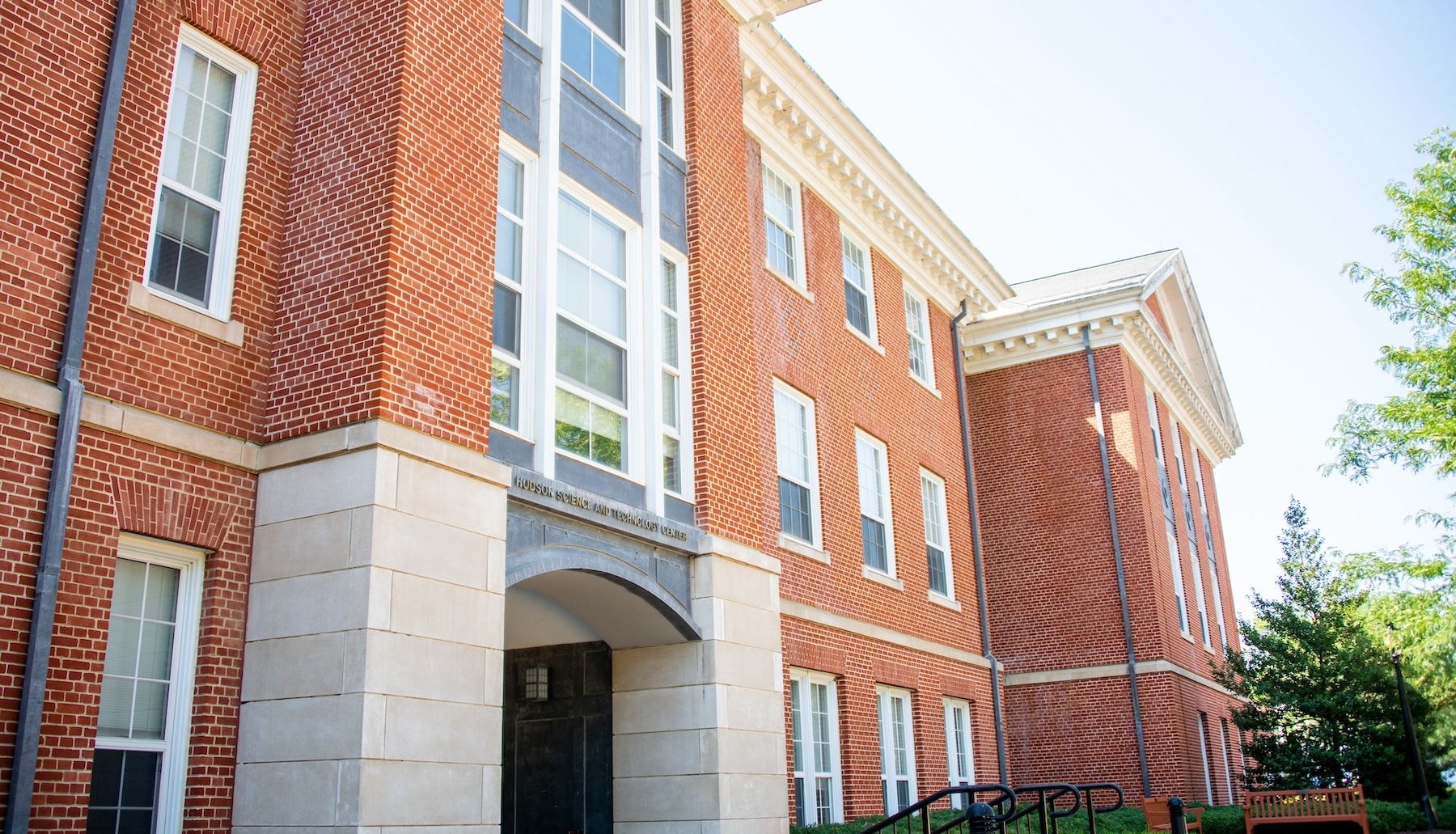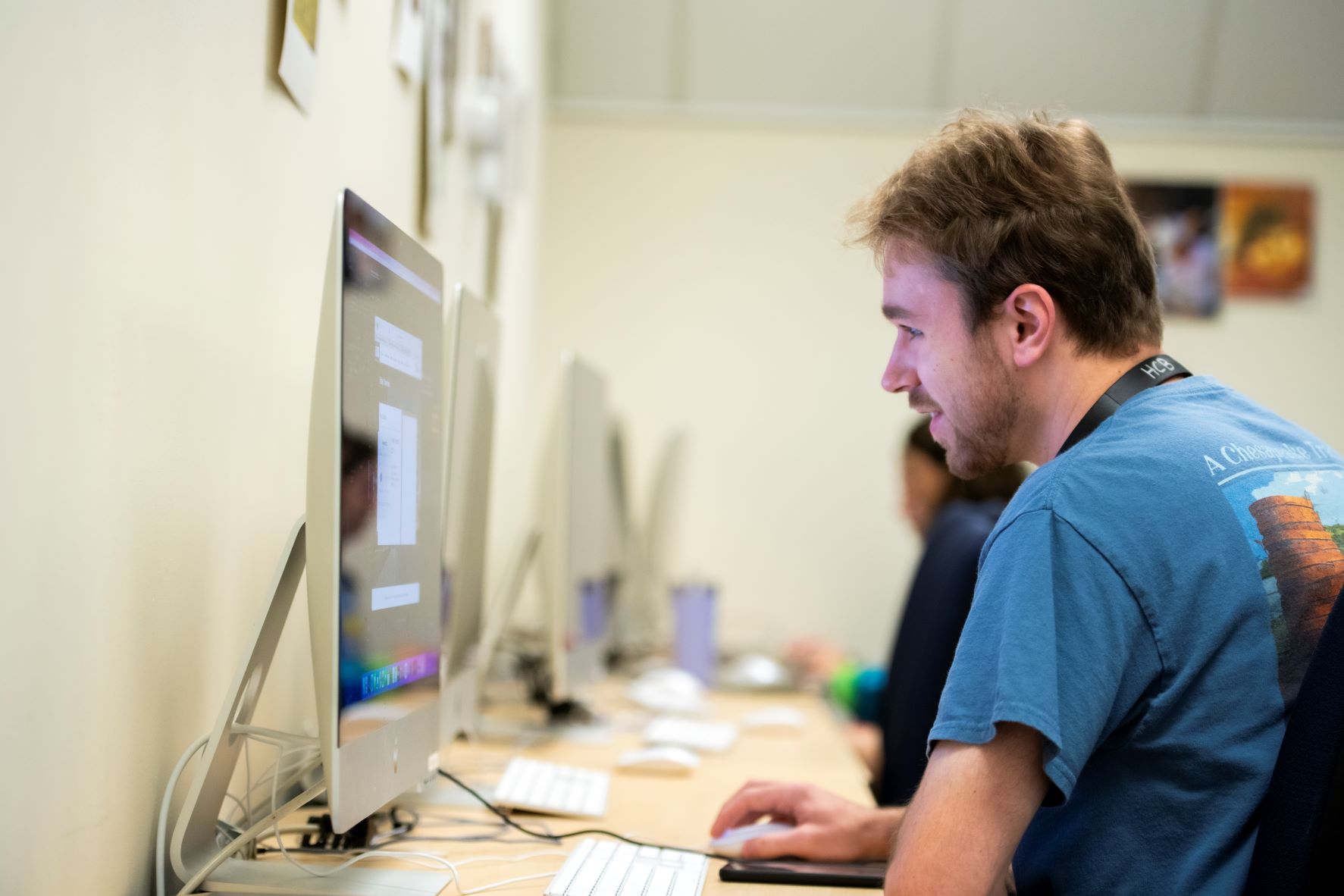In our increasingly digital world, it is important to graduate more students majoring in science, technology, engineering and math. Our nation’s competitiveness depends on the genius and dedication of tomorrow’s scientists, engineers and innovators. Yet today, less than 40 percent of American students pursue STEM fields, and there’s an insufficient pipeline of teachers skilled in those subjects. At Hood, we’re giving STEM students the hands-on experience and liberal arts training they need to fill 21st-century jobs. And with a $1.45 million grant from the National Science Foundation’s Robert Noyce Teacher Scholarship Program,* we are empowering future teachers to spread their excitement for STEM.
“What do you want to be when you grow up?”
Over and over again, we have all answered the big question—and now, as adults, we’ve probably asked the same of the children in our lives. But consider this: perhaps the best answer is, “I don’t know… maybe my job doesn’t exist yet.”
Few kids growing up in the 1990s dreamt of being an app developer, a driverless car engineer, a cloud computing specialist or a drone operator. These are jobs most people had never heard of even a decade ago, but are growing rapidly thanks to constant advances in robotics, artificial intelligence, biotechnology, genomics and advanced materials, according to the World Economic Forum.
It is estimated that 65 percent of children entering elementary school today will end up working in jobs that aren’t even on our radar yet. So how do we help them become ready to adapt to whatever new careers emerge? The experts say the answer is STEM education.
At Hood, we believe that future teachers in STEM disciplines need real experiences in STEM beyond the classroom. The Noyce STEM Teacher Education Partnership (Hood NSTEP), a collaborative effort led by the College in strategic partnership with Frederick Community College and Frederick County Public Schools, is making STEM more exciting and more accessible than ever before.
Supporting Tomorrow’s STEM Teachers
“Students need to be taught by teachers who understand the content and are fully prepared to teach that content,” said Jennifer Cuddapah, associate professor of education. “Science teachers need to be prepared as scientists and also learn pedagogical strategies for inspiring their students to think like scientists themselves.”
Cuddapah, along with Christopher Stromberg, associate professor of chemistry, and Ann Stewart, associate professor and chair of the Department of Mathematics, worked together to apply for and secure the National Science Foundation funding.
The purpose of the grant is to meet the growing demand for qualified STEM teachers who are skilled in culturally relevant practices and desire to teach in high-needs schools, especially in the Frederick community. The funding enables Hood to provide scholarships, specialized programming and mentoring to students who complete their biology, chemistry or mathematics major and teacher certification requirements at the College.
“The idea for designing the different features we proposed came from our collaborative discussions,” Stewart said. “We brainstormed activities and learning experiences we thought would benefit our Hood students as they prepared to become STEM secondary teachers.”
In January, Hood students attended the first STEM 101 event, a multi-day experience comprised of workshops, informational sessions and field trips led by faculty in the STEM majors, the education department and the local school system. Designed for students entering their sophomore year, the program introduces potential NSTEP scholar applicants to educational opportunities in STEM at Hood.
NSTEP scholars will have the opportunity to student teach through Summer Young Scholars at FCPS, a two-week program for identified at-risk youth who demonstrate potential in STEM areas. Student teachers will also be exposed to regional rural, suburban and city school systems to help them better understand what “high-needs” might mean in different educational contexts.
The Noyce Enrichment Series will host speakers and workshops to engage students and faculty in STEM teaching and cultural proficiency. Hood and FCPS facilitators will discuss topics such as how to develop cultural competence and relate to cultural differences in the classroom, how to bridge the connection between college and teaching in today’s schools, and how to teach in districts challenged by high populations of ELLs (English language-learners). NSTEP scholars will also attend one professional conference in their STEM field and one in education.
“As the science department chair at my school, I know firsthand that it has been a challenge to fill vacant science positions over the past several years, especially in chemistry,” said Patricia M. Crowell ’04, M.S.’08, a biology teacher at Tuscarora High School. “There is most definitely a demand for qualified STEM teacher candidates in Frederick County, and NSTEP is a great program to help meet this demand in the future.”
Because of the strategic partnership, students transferring to Hood from FCC will be given priority in receiving the awards. Perry Wood, assistant professor of physics and program manager for engineering at FCC, serves as the FCC liaison for the NSTEP program.
“FCC has many very talented students who have difficulty paying even the reduced tuition of FCC,” Wood said. “The NSTEP program will provide a means for students who transfer to Hood to complete their bachelor’s degree more quickly and with fewer loans.”
NSTEP graduates will be highly qualified due to their participation in scientific inquiry and STEM problem solving. Because Maryland has certification reciprocity with many other states, graduates of Hood NSTEP will be able to choose teaching positions in high needs school districts in Maryland and beyond.
Jessica Roderick ’19 and Riley Smith ’19 were selected to receive the first NSTEP scholarships.
Roderick joined the Hood community six years ago when she began teaching undergraduate Zumba classes. Later, after a divorce, she decided to start anew and begin classes at Hood so she could become a science teacher.
“Hood has been 100 percent supportive in helping me go back to school and start my life over, and that’s something that I’m never going to be able to repay,” she said. “It’s humbling and it’s been a blessing.”
Roderick says her boys, two sons of her own and two stepsons aged 4 to 9, like that their mom has to do homework, too. They’ve even gotten some lab experience themselves, sometimes joining their mom for class with Eric Kindahl, associate professor of biology.
After graduation, she says she’s jumping right into her master’s degree at Hood, and she already has schools inquiring about her work plans. She hopes to get a position as a high school biology teacher in FCPS.
Smith also has dreams of teaching high school students. Initially on the early childhood education track, she took a class that allowed her to experience elementary, middle and high school settings, where she learned she best liked working with older students.
“As for my content area, I always liked math growing up,” Smith said. “It was my favorite class from the beginning, so I figured that would be the best for me to go into.”
Smith says her greatest goal is “to change people’s lives.”
“I want to be the teacher that students feel comfortable talking to and being around,” she said. “I want to inspire my students and give them an education to allow them to do what they want to do and be who they want to be.”
Beyond the Classroom
For Hood STEM students, aspiring teachers or not, the possibilities for internships, work experiences and regular employment after graduation are endless. The College’s proximity to the I-270 technology corridor, as well as to Washington, D.C. and Baltimore, provides opportunities to fit the interests of every student.
But even before students move beyond campus, they have amazing opportunities for research on campus—working side-by-side with experienced faculty for senior-level honors projects, taking part in the Summer Research Institute and presenting at scientific meetings.
The Summer Research Institute provides grants for students and faculty to work on collaborative research projects for eight weeks over the summer. Recent SRI projects have included ultrafast laser spectroscopy of potential hydrogen catalysts, exploring computer models for historic approximations of pi, researching the causes of cancer, and investigating the suitability of sea anemones as indicators of coral reef health.
Located fewer than three miles from Hood, Fort Detrick houses research labs for the National Cancer Institute, the U.S. Army Medical Research Institute of Infectious Diseases, the U.S. Department of Agriculture and other federal agencies. Every year, Hood students work as research interns in these federal labs, either during the school year or in paid summer internships.
Because Hood is only about 50 miles from Washington, D.C., nearly every federal scientific agency has a research site within an hour of Hood’s campus. Students have interned and researched at NASA, the National Institute of Standards and Technology’s Summer Undergraduate Research Fellowship (SURF) program, the NSA and many others.
Frederick is also the home of many companies in biotech and other scientific industries with opportunities at Thermo Fisher Scientific, MedImmune, AstraZeneca, and more—read more about Hood’s partnership with Leidos Biomedical Research here.
Going Beyond the STEM Acronym
As strong innovators, problem solvers and collaborators, Hood STEM graduates continue to get scooped up by companies in every sector. They have mastered highly technical skills, and they’ve developed into excellent communicators, managers and critical thinkers—all part of being a valuable employee in a competitive environment.
In today’s world, STEM education is vital, but it is enriched by the study of art, humanities, philosophy and global studies. The key is not to focus strictly on one discipline, but rather to leverage the best parts of STEM and the humanities to create a cohesive collection of intersecting experiences that defines a liberal arts education at Hood College.
Though most of their efforts may seem to be concentrated in the lab or field, scientists spend a lot of time writing and communicating with nonscientists about why their work matters, considering its impact on society and the environment. The study of humanities makes better scientists, and the study of science makes better humanists.
If American STEM graduates are going to lead the world in innovation, their science education must be accompanied by talents fostered by the liberal arts such as creativity, and political and psychological insight. Graduates with a liberal arts education will be nimble enough to successfully compete in an ever-changing employment landscape, where the jobs of tomorrow may not be fully known to us today. A robust liberal arts foundation, such as the one offered at Hood, offers graduates greater professional flexibility and success.
Neither a coder nor engineer, Steve Jobs once said: “It’s in Apple’s DNA that technology alone is not enough—that it’s technology married with liberal arts, married with the humanities, that yields us the result that makes our hearts sing.”
*The Hood Noyce STEM Teacher Education Partnership (NSTEP) program is funded by the National Science Foundation’s Robert Noyce Teacher Scholarship Program (DUE 1660640).





